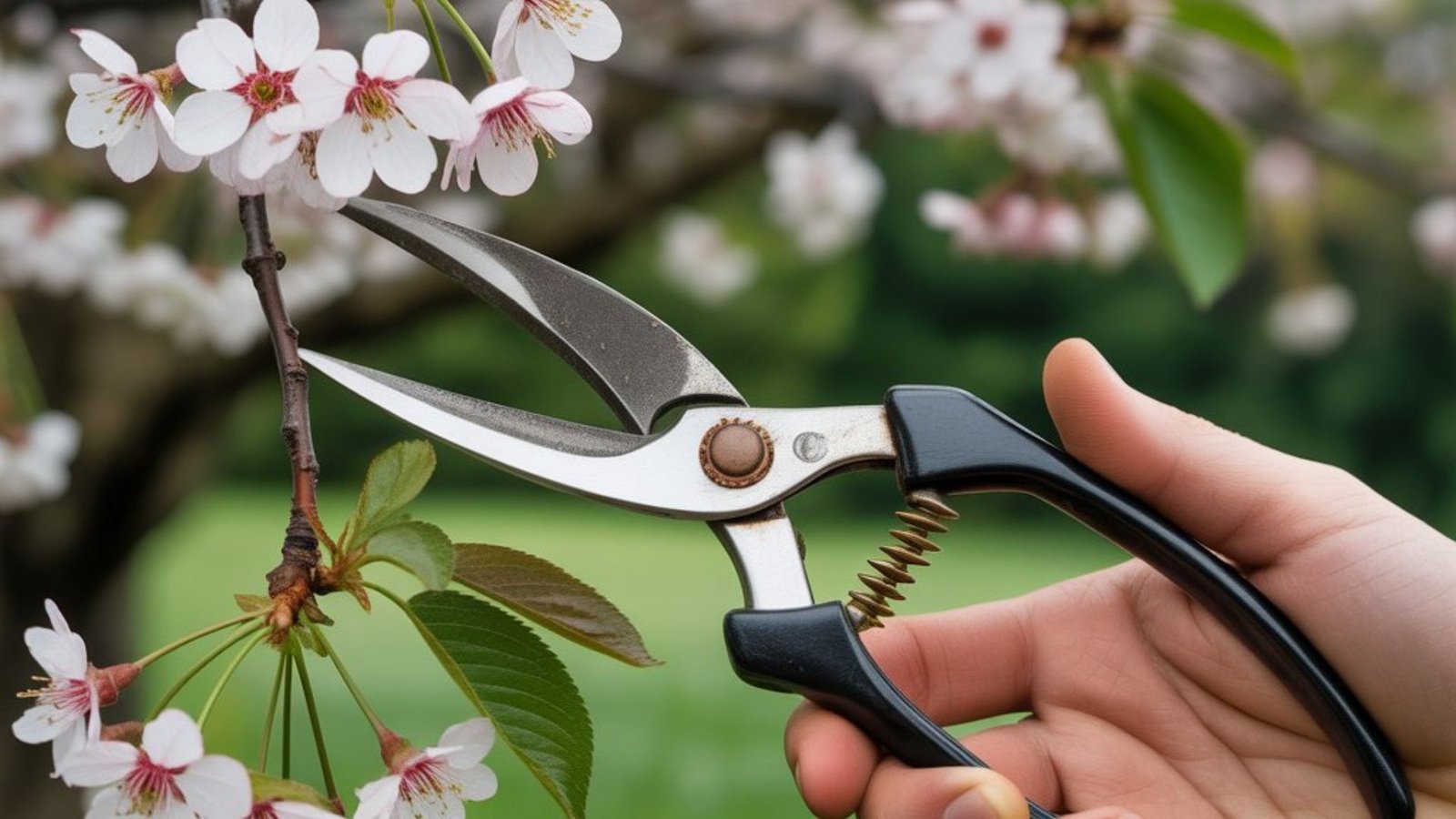Pruning an ornamental Cherry tree is a key feature of tree maintenance, helping to promote healthy growth and enhance its visual appeal. Knowing when to prune an ornamental cherry tree is crucial for ensuring the tree thrives from year to year. If you wish to remove deadwood from sweet cherry trees, it is essential to cut them back on time. This also improves air circulation in the trees. Pruning trees on time is very important. Pruning Cherry trees out of season is harmful.
For example, it slows down the development of the trees and makes them susceptible to diseases. In this resource, we’ll show you the way through the best pruning techniques, seasonal pruning tips, and the best moments to trim your tree for optimal health and beauty. Let’s get started
Why Prune Your Ornamental Cherry Tree?
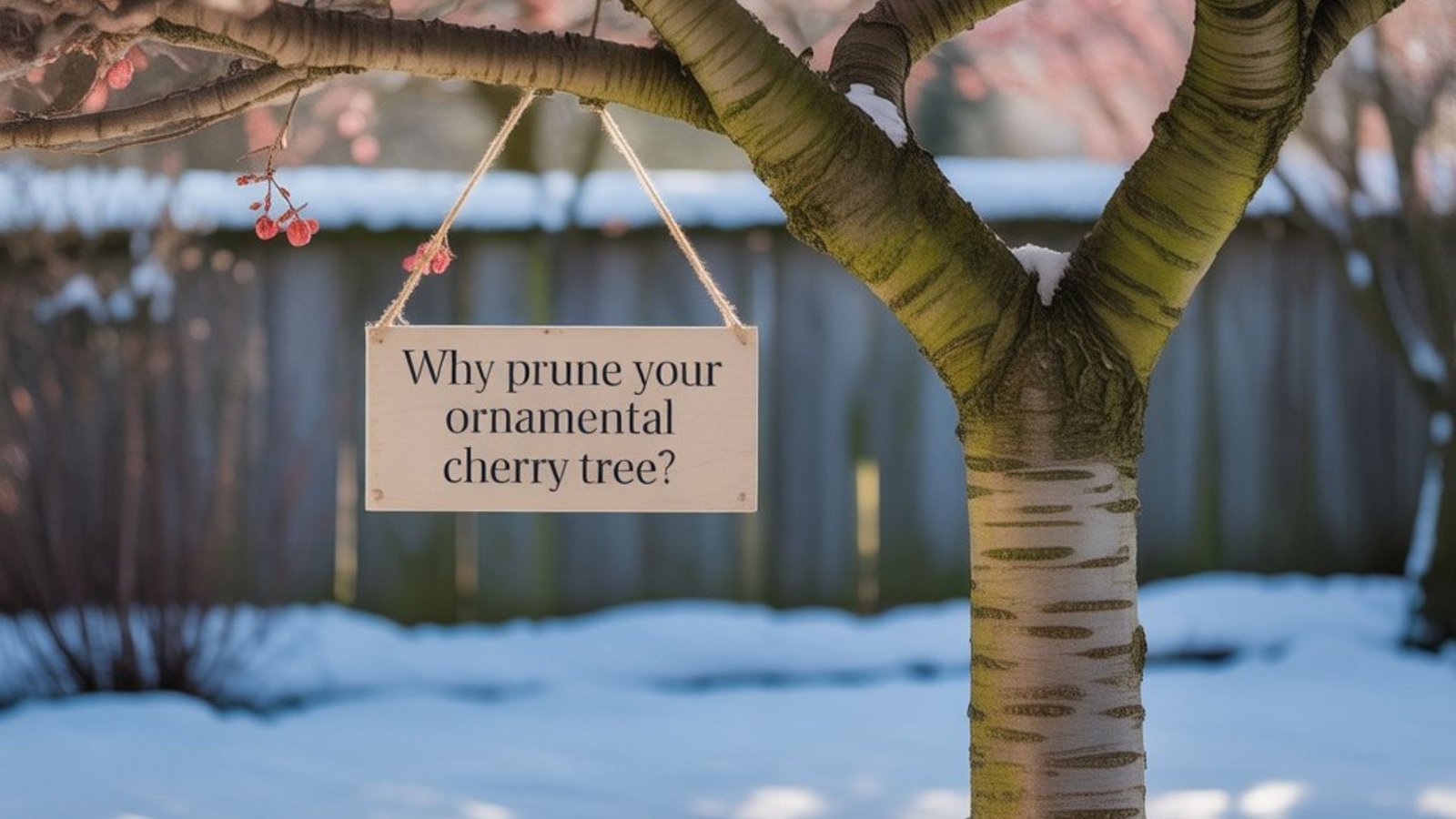
Pruning is vital for maintaining trees. It can support the health of trees, improve the appearance of it, as well as help direct its growth to areas where it is required. When properly done pruning ornamental trees assist in developing a more solid structure, improved airflow, and brighter flowers.
One of the main benefits of pruning is redirecting growth energy. By removing certain branches, you enable the tree to concentrate its energy on healthier, more productive branches.
The Best Time to Prune an Ornamental Cherry Tree
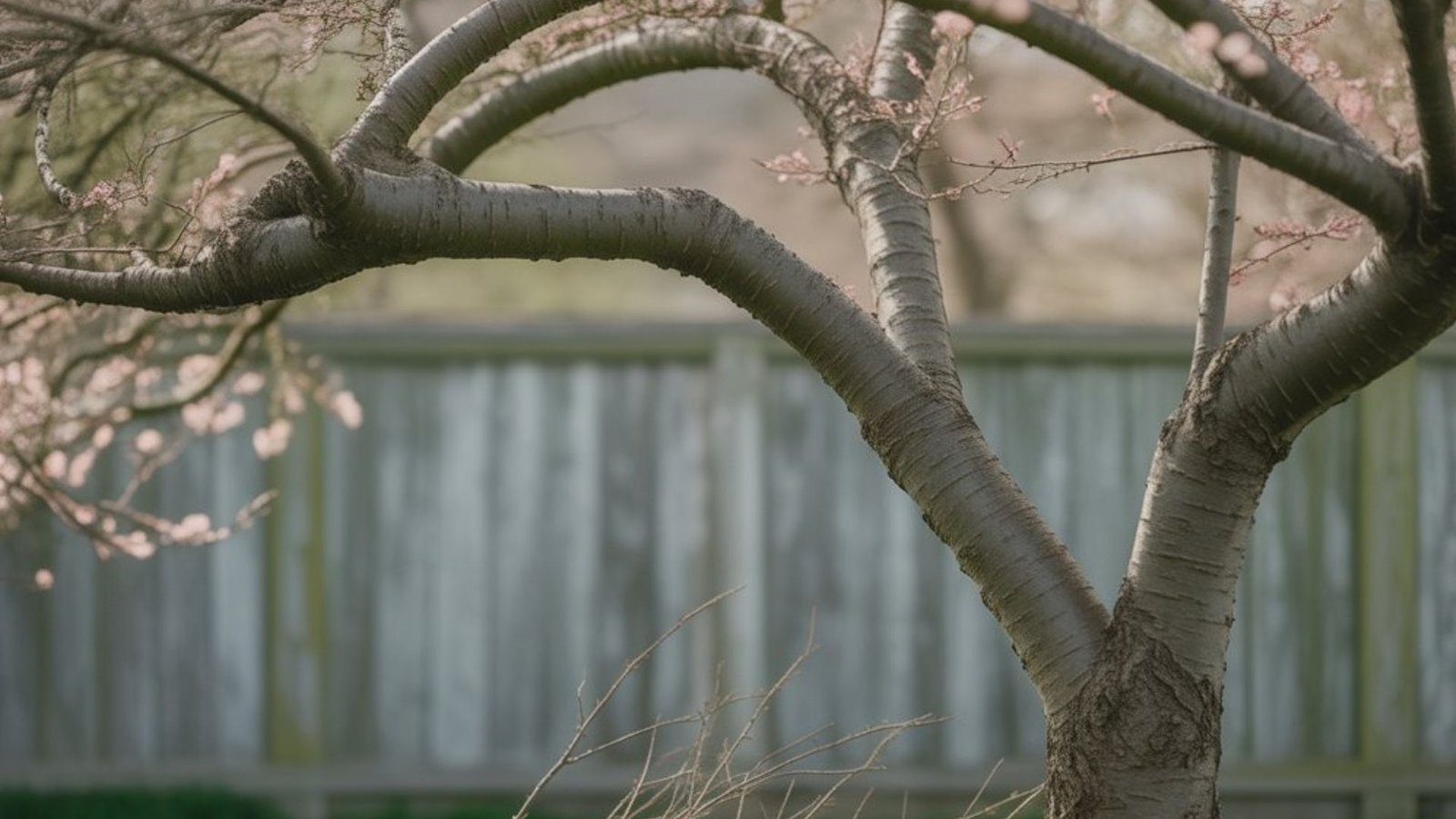
The Timing of your trimming is essential. Pruning timing directly affects the tree’s ability to heal and its future growth. Winter pruning tips suggest that pruning should happen between leaf fall and the opening of the first buds in spring. This is when the tree is at rest. making it an ideal time for branch removal without causing too much stress on the tree.
On the other hand, summer pruning for trees is often done after the tree’s leaves have fully grown. This allows for better observation of the tree’s health and structure. For pruning flowering cherry trees, it’s best to prune soon after the flowers have bloomed. This ensures that the next year’s flowers are not affected.
Key Signs That Your Cherry Tree Needs Pruning
You should prune your cherry tree when you notice certain signs. If you notice dead wood, it’s a sure signal that a branch is in need to be taken down. The branches that are diseased or dead can cause harm to the whole tree. Another indicator is branch density. When branches become too thick, they can block sunlight and hinder airflow, so it’s time to thin tree branches.
Crossing branches is another problem. If branches rub together, it can damage the tree’s bark and create openings for diseases. In these situations, taking out dead or thinning branches can enhance the health of the tree as well as its appearance.
Pruning a Young Cherry Tree: Establishing Healthy Growth
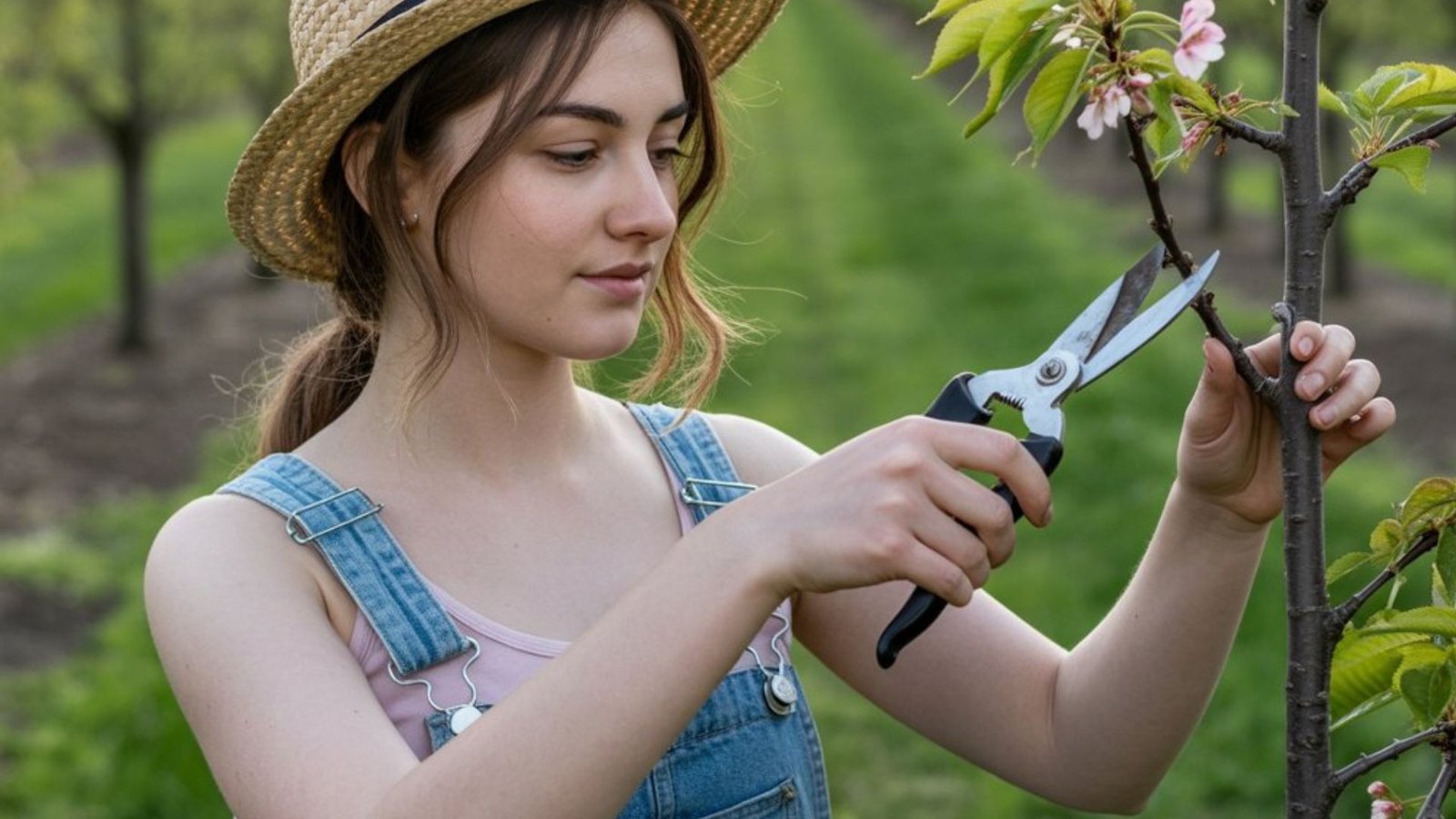
When pruning a young cherry tree, the goal is to establish a strong foundation. It is very important to prune trees. Do not cut off the branches that support the trees. Pruning trees strengthens their branches and makes the trees grow faster. It is very important to prune small trees that are still a little big. You have to make sure that you only prune branches that are diseased and crooked.
How to Prune Large Branches: The 3-Step Cut
When trimming large branches it is essential to follow the right technique to ensure that the tree is not damaged. The three-step cut method is crucial for the removal of branches that are larger. First, you need to make a tiny cut on the lower part of the branch, approximately 1 foot away from the trunk of the tree. This stops the bark from splitting as the branch falls. After that, you should make a second cut over the branch, a little further away until the branch is no longer in use. Cut straight across your branch’s collar to ensure the branch is fully healed.
This technique reduces stress on the tree, and also promotes speedier recovery. Remember that pruning tools need to be sharp in order to create clear cuts that do not harm the tree’s cuts from pruning.
Pruning for Structure: Shaping Your Ornamental Cherry Tree
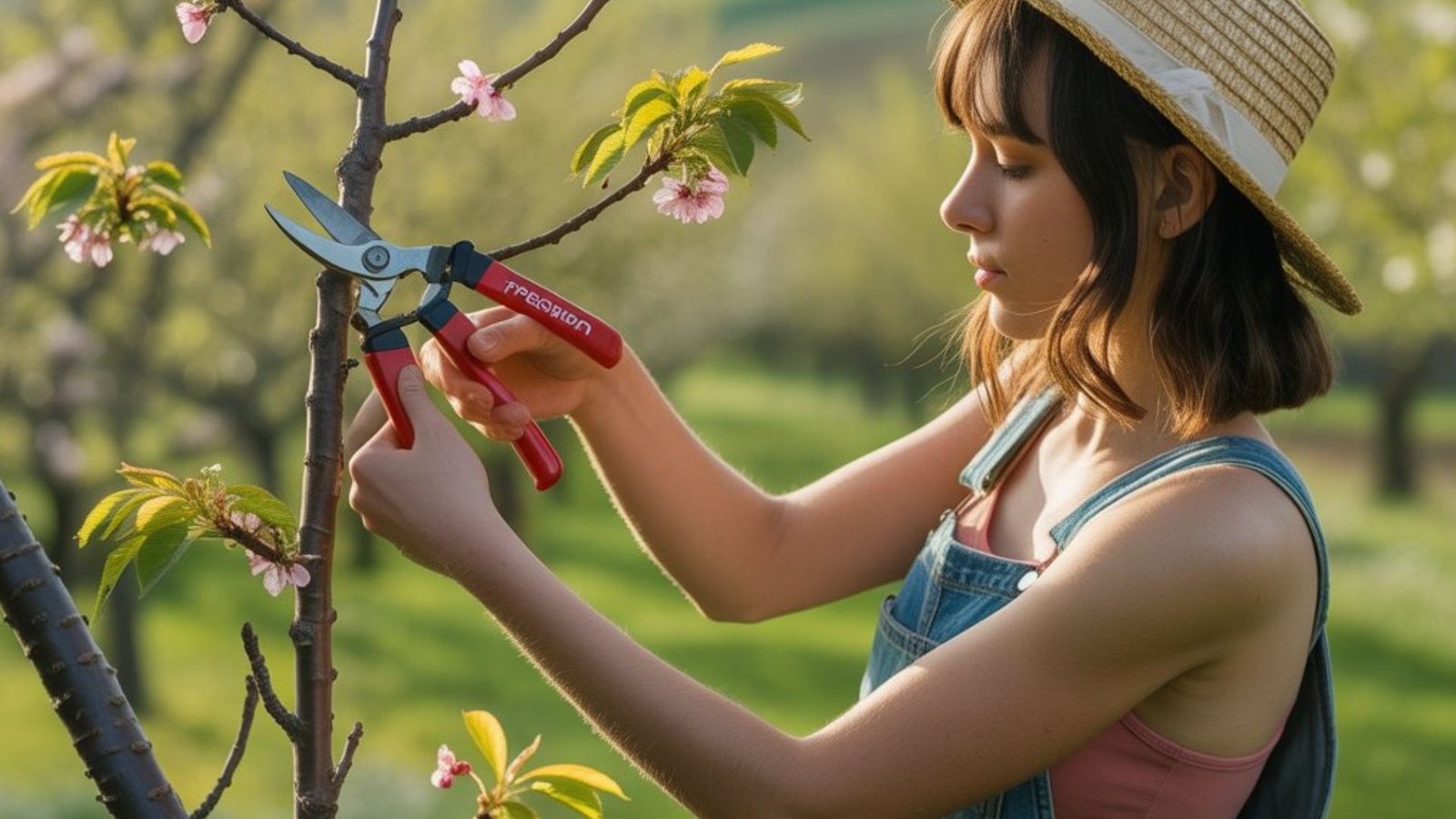
Shaping your tree is an important part of pruning. This means selecting the most suitable branches and removing branches that affect the symmetry of the tree. Pruning to improve light and air circulation is vital to assist the tree become strong and healthy. For trees with ornamental cherry make sure to maintain an open, appealing structure.
When pruning to improve structure, think about the natural growth patterns of the tree. If you’d like to expose the beautiful tree’s trunk, trim branches around the trunk. This creates a tidy open form while keeping the natural beauty of the tree.
Pruning Dead, Diseased, or Crossing Branches
It is essential to eliminate dead branches immediately you spot they are present. The branches that are diseased or dead can cause infections to healthy areas within the trees, therefore immediate action is crucial. Additionally, branches that cross paths can lead to damage of the bark which causes the tree to weaken in time. By taking these branches off and allowing the tree to concentrate on a healthier growth.
Deadwood removal is a simple but effective way to improve tree health. Cutting away the diseased parts prevents the spread of illness and encourages the tree to grow stronger, healthier branches.
How Often Should You Prune Your Cherry Tree?
Pruning frequency depends on the age and health of your tree. For younger trees, pruning every 1-2 years is often enough to encourage healthy growth. However, as your tree matures, it’s important to prune more frequently to maintain its shape and health.
Typically, trimming ornamental trees should be completed each year for 1-3 years. However, it’s crucial to examine your tree every year for dead or diseased branches. Tree maintenance is a continuous chore and the more often you prune, the more easy it will be to keep the health of your tree and its beauty.
Post-Pruning Care for Your Ornamental Cherry Tree
After pruning the cherry tree, it requires some attention to grow stronger and recover. The health of your tree and pruning are inextricably linked. Therefore, you must ensure that you water your tree regularly after pruning in order to assist it recover. Mulching the area around the part of the tree’s base can assist in keeping moisture in the tree and stop plants from forming. It’s an excellent idea to apply a thin layer of fertilizer to help support the growth of new plants. Maintenance of trees is an ongoing process, so paying careful attention to the tree’s growth will ensure that it continues to flourish.
Common Pruning Mistakes to Avoid
There are a few common mistakes that people make when pruning cherry trees. One of the most common is over-pruning. Removing too many branches can stress the tree and lead to growth redirection that weakens it. Another mistake is cutting branches in the wrong place. Always prune at the branch collar, never too close to the trunk, to allow for proper healing.
It is also essential to be careful not to prune at an early point in the growing season. Pruning too early could damage the new growth, and cutting too late may cause the tree to not heal correctly prior to when the growth cycles begin again. If you follow the correct pruning methods and timing, you will avoid costly errors.
Pruning Cherry Trees in Pots: Special Considerations
If you own an ornamental cherry tree that is in a pot, the pruning is more essential. In containers, plants have limited space, and their growth can quickly become unruly. When pruning potted trees keep in mind the tree’s form and controlling the size. Pruning lightly, with a focus on eliminating dead or damaged branches. Remember that potted trees require special attention to their roots. A potted tree requires special attention to its root system. When your plant has been residing in this same container for a number of years, it could be time to think about repotting. when to prune an ornamental cherry tree is very important?
Conclusion: Master the Art of Pruning for Healthy and Beautiful Cherry Trees
Pruning an ornamental cherry tree may seem like a complicated task, but with the right timing and techniques, it can be a rewarding experience. Make sure you prune your tree to ensure health, eliminate dead wood and ensure that you’re trimming when you should to ensure optimal growth. With appropriate pruning tools and a bit of perseverance you’ll be able to be a master of the art, and enjoy attractive and healthy decorative cherries in the backyard for many years to come.
FAQs
Q1. When should you not prune?
Avoid pruning in late spring or early summer when the tree is actively growing to prevent stressing it.
Q2. When to cut back ornamental?
Prune ornamental trees after flowering to maintain shape and remove deadwood, typically in late spring or early summer.
Q3.When to fertilize ornamental cherry trees?
Provide nutrients to ornamental cherry trees in early spring before new growth begins for the best results.
Q4.Can I cut the top off my cherry tree?
Cutting the top off a cherry tree can damage its shape and growth; it’s better to prune selectively to encourage a balanced structure.
Q5. How do you propagate an ornamental cherry tree?
You can grow ornamental cherry trees through using softwood cuttings in late spring or early summer and rooting them in a Soggy environment.

